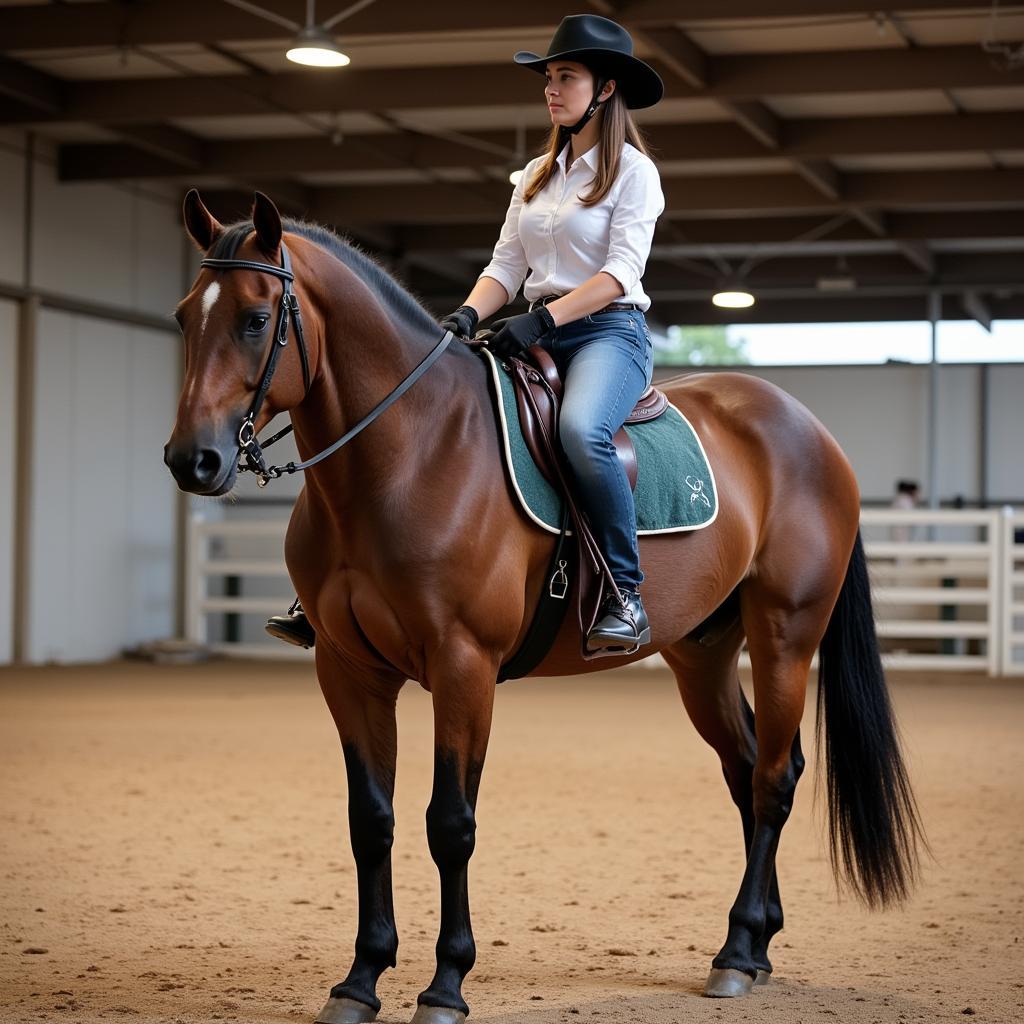The horse bosal is a unique piece of tack that can be an effective tool in the right hands. However, it’s often misunderstood and sometimes misused. This comprehensive guide will delve deep into the world of Horse Bosals, exploring their history, design, functionality, and how to use them correctly and humanely.
A Journey Back in Time: The Origins of the Bosal
The bosal has roots deep in traditional horsemanship, particularly in the vaquero tradition of the American West. Originating from the Spanish word for “muzzle,” the bosal was the primary headgear used by vaqueros to start young horses and develop their responsiveness and collection. Crafted from braided rawhide, the bosal’s design reflects a philosophy of communication through feel and release, encouraging horses to seek a soft, balanced connection with the rider.
Anatomy of a Bosal: Decoding the Design
A bosal isn’t just a simple noseband. Its construction is key to its function. Here’s a breakdown of the essential parts:
- Nose button: This is the enlarged, rounded part that sits on the horse’s nose. It’s designed to distribute pressure over a larger area, making it gentler than a bit.
- Heel knot: Located under the horse’s jaw, the heel knot provides leverage and aids in turning cues.
- Bosalita: This smaller, thinner piece of rawhide sits higher on the nose and helps refine the horse’s response to pressure.
- Mecate: More than just reins, the mecate is a single, continuous rope that forms a loop through the bosal and serves as both reins and a lead rope.
How Does a Bosal Work? Understanding the Mechanics
Unlike bits that act on the horse’s mouth, a bosal communicates through pressure points on the nose, jaw, and poll. When the rider picks up the mecate, the bosal tightens, applying pressure to these areas. Releasing the pressure rewards the horse, encouraging them to seek that release by softening to the pressure.
Choosing the Right Bosal: A Matter of Fit and Purpose
Bosals come in various sizes, materials, and constructions to suit different horses and stages of training. Factors like the horse’s age, breed, head conformation, and level of training all play a role in selecting the right bosal.
“A well-fitted bosal should fit snugly but not too tightly,” says Sarah Williams, a renowned horse trainer specializing in starting colts using traditional vaquero methods. “It should sit about two finger widths below the horse’s cheekbone, and the heel knot should rest comfortably under the jaw.”
Beyond the Basics: The Versatility of the Bosal
While often associated with starting young horses, the bosal’s applications extend far beyond that. Experienced riders and trainers utilize bosals for:
- Refining communication: The bosal encourages lightness and responsiveness in the horse.
- Developing collection and self-carriage: The bosal encourages the horse to lift through its back and engage its hindquarters.
- Working on transitions: The bosal allows for clear and subtle cues, making it effective for smooth transitions between gaits.
The Importance of Patience and Proper Training
A bosal is not a shortcut to a well-trained horse. It requires a skilled and patient rider who understands how to apply and release pressure correctly. Harsh or inconsistent use of a bosal can lead to discomfort, confusion, and even physical harm to the horse.
 Horse and Rider Training with Bosal
Horse and Rider Training with Bosal
Conclusion: The Enduring Legacy of the Horse Bosal
The horse bosal is a testament to the art and tradition of horsemanship. When used correctly, it fosters a deep connection and clear communication between horse and rider. By understanding its history, mechanics, and proper use, we can ensure this valuable tool continues to be a force for good in the world of horses.
FAQs
1. Can any horse wear a bosal?
While bosals are versatile, they are not ideal for every horse. Horses with sensitive noses or certain conformation challenges may benefit from alternative headgear.
2. Is a bosal gentler than a bit?
When used correctly, a bosal can be gentler than a bit. However, any tool, including a bosal, can be misused and cause pain.
3. How long does it take to train a horse with a bosal?
The training timeline varies depending on the horse’s age, temperament, and previous training.
4. Can I ride my horse on the trail with a bosal?
Yes, once a horse is reliably trained in a bosal, it can be ridden on the trail.
5. Where can I learn more about using a bosal?
Seeking guidance from experienced horsemen or trainers specializing in bosal work is essential for safe and effective use.
For further assistance, please don’t hesitate to contact us. Our team at Justus Horses USA is available 24/7 to answer your questions and provide expert advice.
Call us at: 0772127271
Email us at: [email protected]
Visit us at: QGM2+WX2, Vị Trung, Vị Thuỷ, Hậu Giang, Việt Nam.